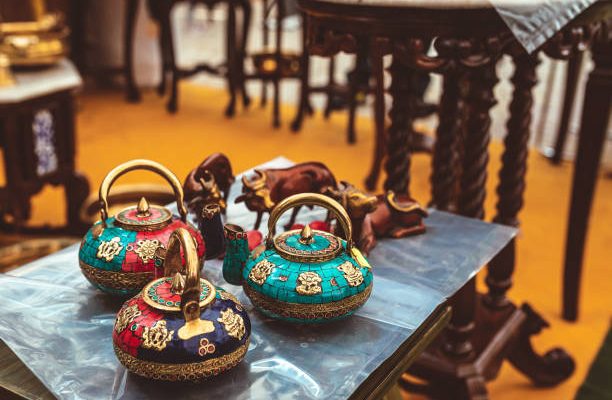As the holiday season approaches each year, homes and streets come alive with festive decorations, setting the stage for a joyous celebration. Among the most iconic of these adornments are the Christmas decorations that transform living spaces into magical wonderlands. From twinkling lights to lush greenery, each ornament carries with it a rich history that spans centuries and continents. Let’s delve into the origins of these beloved traditions, exploring how they’ve evolved to become integral parts of the modern-day Christmas experience.
Ancient Roots: Pagan Festivities
The origins of many Christmas decorations can be traced back to ancient pagan traditions, long before the advent of Christianity. In pre-Christian Europe, winter solstice celebrations marked the longest night of the year, a time when people sought to fend off darkness and cold with symbols of light and life. Evergreen plants such as holly, ivy, and mistletoe were revered for their ability to stay green even in the depths of winter, symbolizing resilience and hope for the return of spring.
The Advent of Christianity
With the spread of Christianity across Europe, pagan customs intertwined with Christian beliefs, leading to the evolution of holiday traditions. In the 4th century, Pope Julius I declared December 25th as the official date of Christ’s birth, aligning it with existing winter solstice festivities. Over time, Christian symbolism began to merge with pagan practices, giving rise to new traditions that honored both religious and cultural heritage.
The Tree of Life: Origins of the Christmas Tree
One of the most iconic symbols of Christmas, the evergreen tree, has its roots in ancient pagan rituals. In Norse mythology, the evergreen fir tree was associated with the god Balder, symbolizing life, fertility, and rebirth. Germanic tribes also revered the fir tree, bringing it indoors during winter solstice celebrations as a reminder of the coming spring.
The tradition of decorating a Christmas tree as we know it today is believed to have originated in 16th-century Germany. Legend has it that Protestant reformer Martin Luther was inspired by the beauty of stars twinkling through the branches of a fir tree one winter night. To recreate the scene for his family, he adorned a small tree with candles, symbolizing the light of Christ illuminating the darkness of the world.
Decking the Halls: Greenery and Garland
Decking the halls with boughs of holly, ivy, and other greenery is a tradition that predates Christianity yet remains a beloved part of modern Christmas decor. In ancient Rome, people adorned their homes with evergreen branches during the festival of Saturnalia, a precursor to Christmas.
Holly, with its prickly leaves and vibrant red berries, was revered by ancient Celts as a symbol of protection and fertility. In Christian tradition, the sharp leaves were said to represent the crown of thorns, while the berries symbolized the blood of Christ. Similarly, ivy, with its ability to cling to and climb any surface, was seen as a metaphor for Christ’s love and sacrifice.
Shining Bright: The Advent of Christmas Lights
The tradition of illuminating homes and streets with lights during the holiday season has ancient origins, rooted in the celebration of light conquering darkness. In pre-Christian times, candles and bonfires were lit during winter solstice celebrations as symbols of warmth, hope, and renewal.
The use of candles to adorn Christmas trees dates back to Martin Luther’s time in the 16th century, as mentioned earlier. However, it wasn’t until the 19th century that Christmas lights as we know them today became popular. In 1880, Thomas Edison’s invention of the electric light bulb paved the way for safer and more elaborate lighting displays, transforming Christmas decorations into dazzling spectacles.
Tidings of Joy: Ornaments and Baubles
The tradition of hanging ornaments on Christmas trees can be traced back to 16th century Germany, where families decorated their trees with fruits, nuts, and sweets. These edible decorations symbolized abundance and the harvest season, as well as the generosity of spirit associated with the holiday season.
Over time, handmade ornaments crafted from wood, glass, and metal became popular, featuring symbols of faith, family, and nature. In the 19th century, the production of glass ornaments flourished in Germany, leading to the mass production of colorful baubles adorned with intricate designs and motifs.
A Global Tapestry: Cultural Influences on Christmas Decorations
While many Christmas decorations have European origins, the holiday’s global popularity has led to a rich tapestry of cultural influences. In Latin America, vibrant piñatas and nativity scenes known as nacimientos are popular decorations, reflecting the region’s strong Catholic heritage. In Asia, where Christianity is a minority religion, Christmas decorations often blend traditional symbols with Western influences, resulting in unique and eclectic displays.
Celebrating Tradition and Innovation
As we deck the halls each year with boughs of holly, twinkling lights, and cherished ornaments, we participate in a tradition that spans centuries and continents. From ancient pagan rituals to modern-day celebrations, Christmas decorations serve as reminders of the season’s rich cultural and religious heritage. As we gather with loved ones to celebrate the holidays, let us cherish these timeless symbols of hope, joy, and goodwill toward all.













Comments